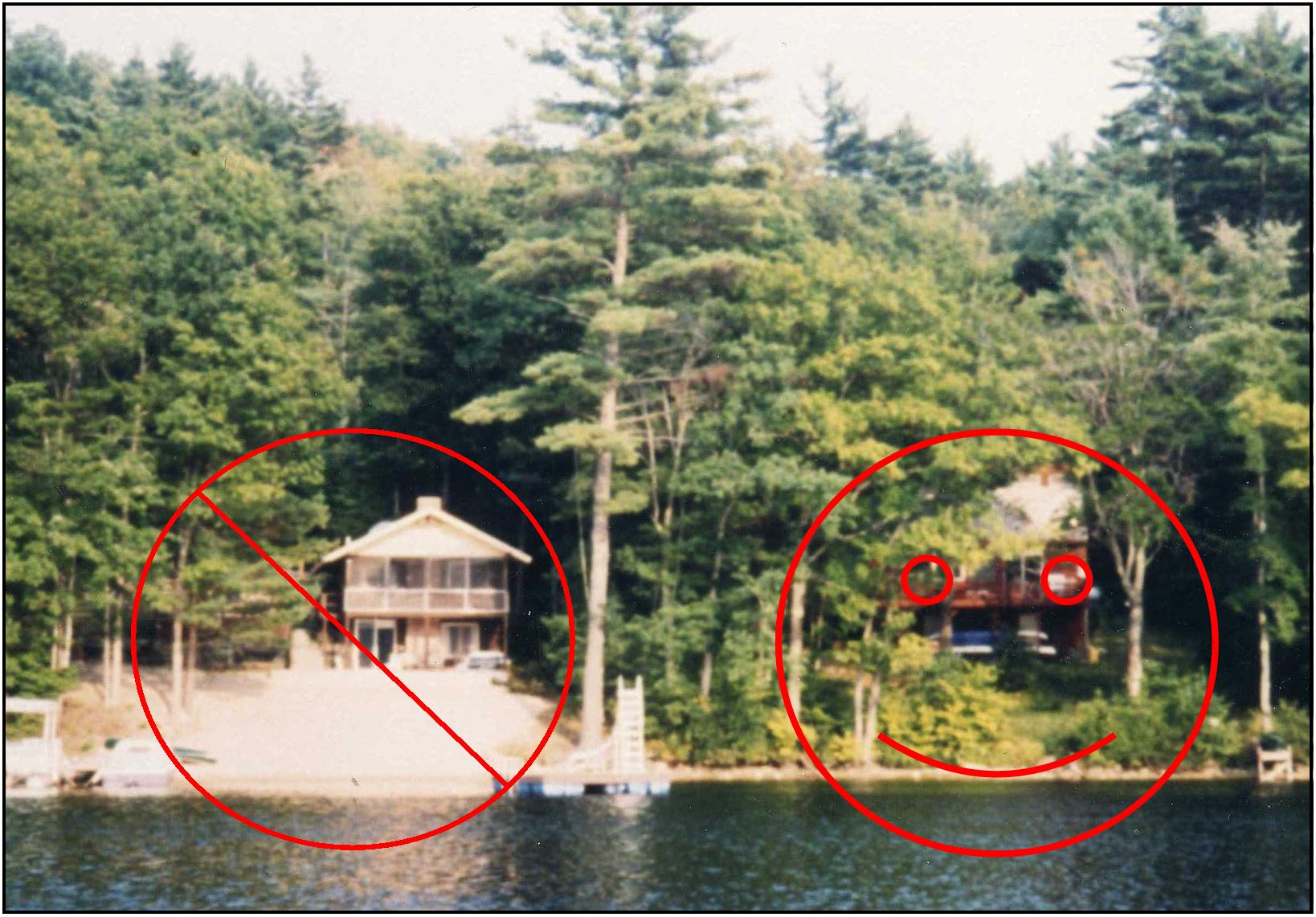Home → Land Resources → Watershed → Shorefront Property Owners Information → Shoreline Landscaping for Lake Protection
 Shoreline Landscaping for Lake Protection
Shoreline Landscaping for Lake Protection
Shoreline trees, shrubs, and groundcover plants buffer/protect lakes by acting as a sponge for stormwater runoff. These buffer strips or ribbons of vegetation catch sediment and other pollution before it reaches the lake.
Trees and shrubs intercept raindrops and reduce their impact on the soil while low growing plants and the “duff” layer filter runoff. The deep tangled root system of trees and shrubs hold soil in place and absorb water and nutrients. In addition, buffer plants can enhance privacy, filter noise and wind, plus attract birds, butterflies and other wildlife. And believe it or not, these areas are very important to aquatic animals such as fish living in the shallows along the shore.
Landscaping and managing your lake shoreline to protect and/or restore buffer vegetation is the most important way you can help your lake and have a low-maintenance, great-looking property.
The adage Lakes Like Less Lawn has never been more true!
The following publications and links provide more information on lake shoreline landscaping (aka "buffers"):
Buffer Handbook. A Guide to Creating Vegetated Buffers for Lakefront Properties (1998). This 20-page handbook provides information about landscaping your shoreline for lake protection and helps you get started on planning and planting your shoreline. This manual is available electronically, unfortunately it is no longer available in print.
Buffer Handbook Plant List. This 50-page publication contains a listing of and details about trees, shrubs, and groundcovers that could be used in planting or improving a buffer in Maine. Plant descriptions include scientific and common names, sun and soil requirements, plant hardiness zone, plant characteristics, and native status. This publication is only available electronically.
Gardening to Conserve Maine's Natural Landscape: Plants to Use and Plants to Avoid from University of Maine Cooperative Extension.
Invasive plants from the Maine Natural Areas Program.
Yardscaping. Yard care tips with a conservation focus.
LakeSmart Program, Maine Lakes Society.
"Vegetated Buffers: Protecting Property Values and Water Quality" Video. To encourage the use of vegetated buffers, the Division of Watershed Management produced this 15 minute video on DVD. This video, narrated by Cliff Michaelsen, discusses phosphorus pollution to our lakes and how vegetated buffers between the shoreline and dwelling help to protect water quality. The video shows actual Maine shorefront properties before a vegetated buffer is in place and after a buffer is installed. The 'after' view is computer generated to help the viewer visualize the enhanced shoreline. You can borrow a copy from the Nonpoint Source Training and Resource Center. Contact: John Maclaine phone: 207-615-3279.
DEP Lakes Page. This webpage provides links to more information about lakes.